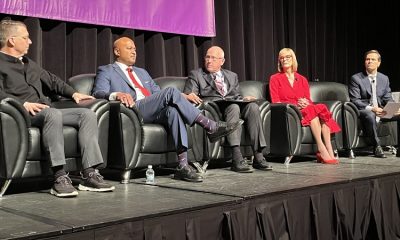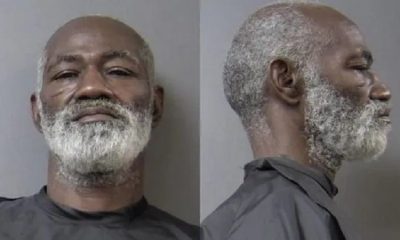Local News
To help save lives, healthcare professionals urge more individuals to practice CPR

Indianapolis, Indiana – Everyone should learn CPR, according to health specialists, because you never know when you might need it and it might save your life before help arrives.
Dr. Philip Lee, an Ascension sports cardiologist said, “If that person has collapsed and they do not have a pulse and they are unresponsive anything you do gives them a chance at life.”
Anything is preferable to nothing. That is the advice given by healthcare professionals when it comes to performing CPR in a crisis.
“Speed is of the essence,” Lee said. “Again when something like this happens the faster you react, the faster you can give blood to the brain, the faster you can bring back a pulse the better chances they can survive.”
In an emergency there are three steps you must take:
1. Have someone call 911 to get professional help
2. Send someone to look for an AED
3. Have someone start chest compressions
Anybody can perform CPR. In order to locate the center and begin the compressions, the person’s chest should ideally be exposed. Compressions should be performed at a rate of 100 to 120 per minute and should be two inches deep.
Jayne Stone, an Ascension registered nurse, and CPR class coordinator said, “I think it’s a very important skill that you could use throughout your life and you never know when you could be confronted with a situation where someone needs help.”
The most recent suggestion, known as hands-only CPR, eliminates the need for mouth-to-mouth breathing when persons who are not medical professionals perform CPR during an emergency.
“The more time we are pumping the heart to provide blood, whether is oxygenated or not, the better their odds are,” Lee said. “And so the focus is trying to streamline and say ‘Just remember this, keep pumping that chest.’”
The pads should be applied to a person’s bare skin as soon as an AED arrives. Whether the person has an irregular heartbeat that needs a shock to return to normal, the machine will guide you through the procedure and tell you if that is the case.
“You do need to remove all clothes, including a bra on a female person, to make sure the AED is in the correct place,” Stone said. “Doing compressions over the clothes is better than nothing but ideally, we would like that clothing removed so we can ensure you are at the right place.”
Ascension offers workshops so that anybody can learn CPR in collaboration with the American Heart Association. Although the January session is already full, there are plans to add more dates so that more people can enroll.
Songs by New York Presbyterian that are all 100 beats per minute may be found on a Spotify playlist that can be used to time CPR.
-

 Local News2 weeks ago
Local News2 weeks agoCouncil of Bloomington overrides mayor’s veto of resolution calling for a ceasefire in Gaza
-

 Local News2 weeks ago
Local News2 weeks agoAttorney General Rokita offers her opinion on the use of pronouns at work
-

 Local News2 weeks ago
Local News2 weeks agoThe positions of the Republican gubernatorial candidates regarding taxes
-

 Local News1 week ago
Local News1 week ago$50,000 Truck stop sells Powerball tickets that are about to expire
-

 Indiana1 week ago
Indiana1 week agoAnderson man sentenced to 65 years for wife murder
-

 Local News2 weeks ago
Local News2 weeks agoBehold the spectacle that is Good Gravy!
-

 Indiana2 weeks ago
Indiana2 weeks agoWoman from Aurora detained for assaulting a child
-

 Local News1 week ago
Local News1 week ago$75 million “luxury urban” townhomes and condos with rooftop terraces are set to begin construction






Leave a Reply